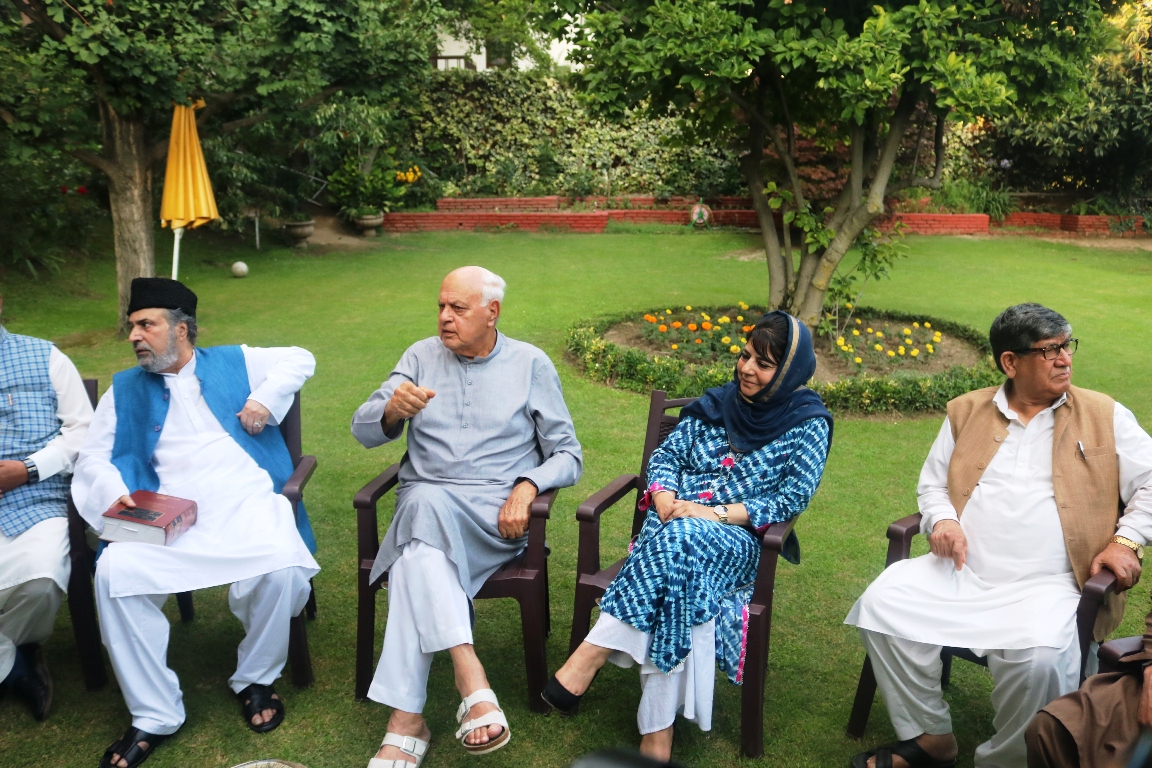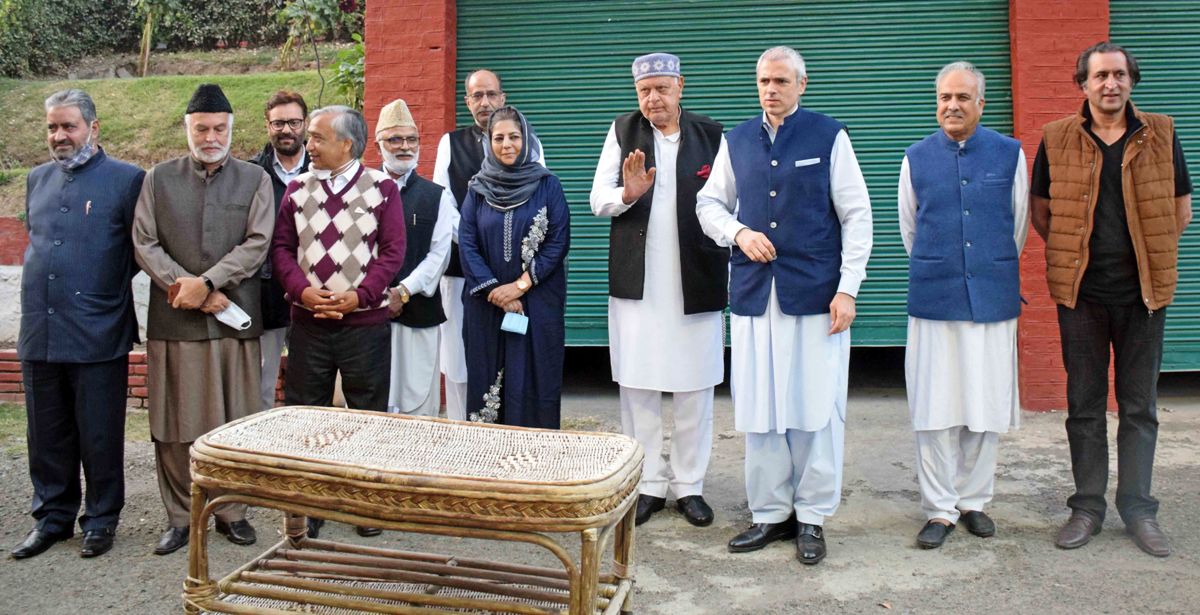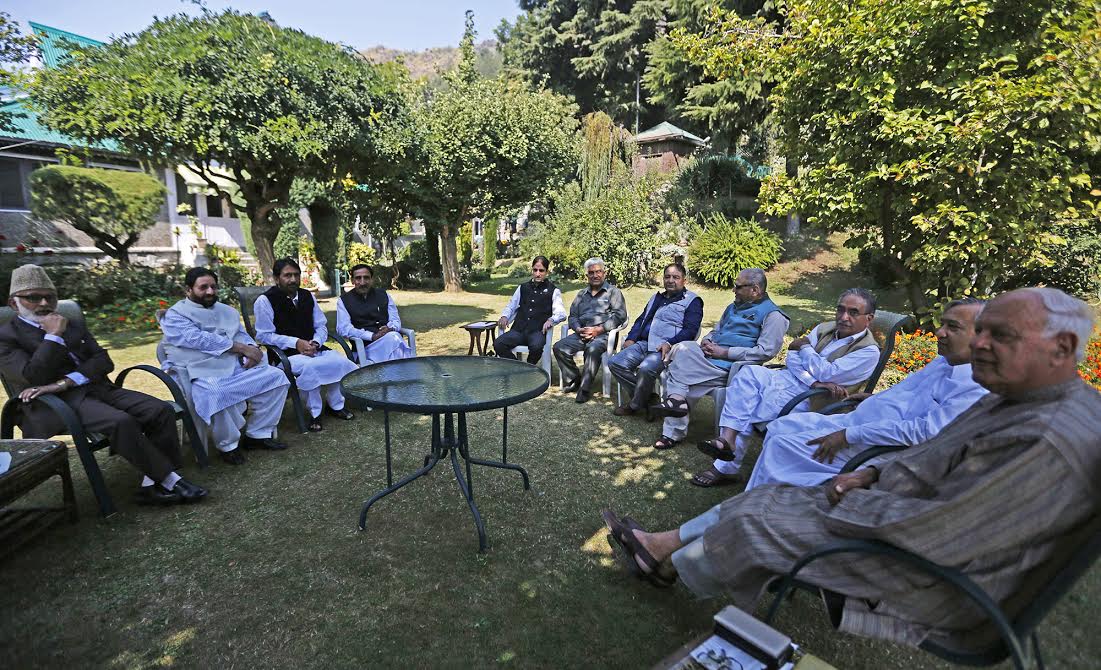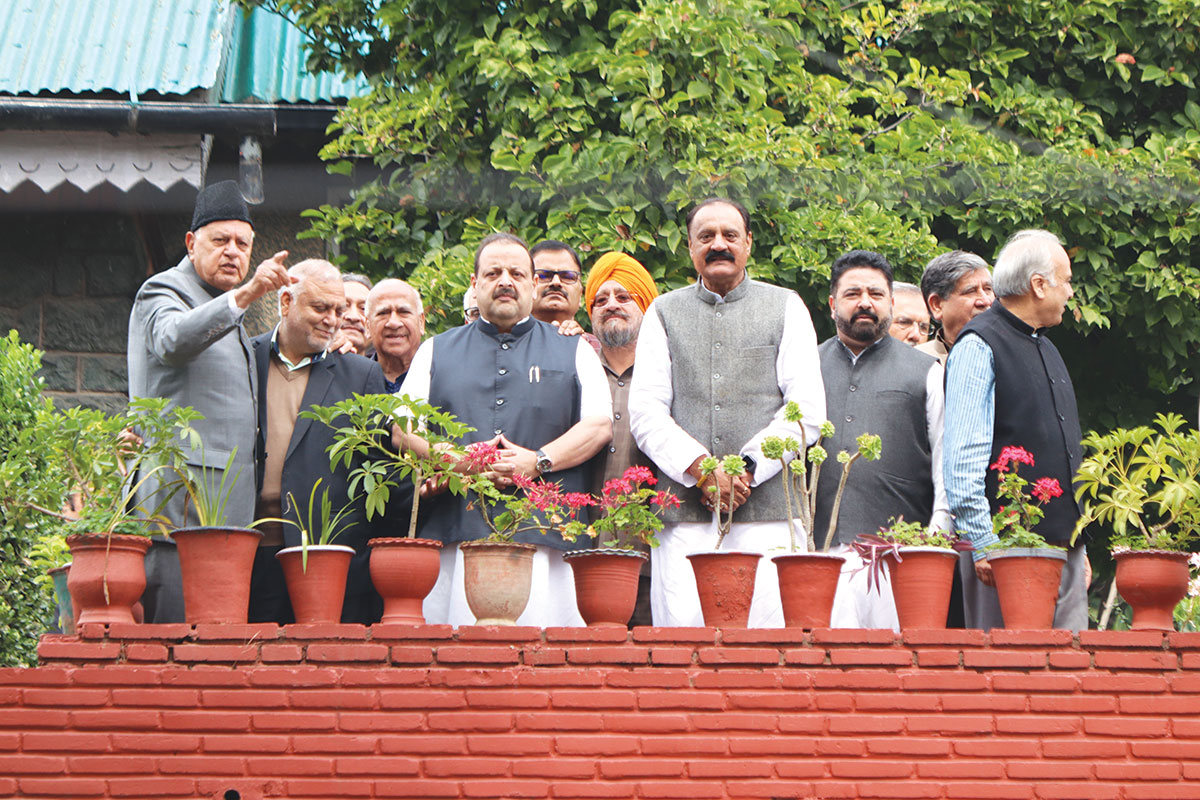In the new dispensation cranked up by the centre after Article 370 decision, all the PAGD like organization’s moves have been anticipated and the structures put in place to forestall them, writes Riyaz Wani

Six Jammu and Kashmir parties have built upon the Gupkar Declaration by stitching up a formal alliance and giving it a name – People’s Alliance for Gupkar Declaration (PAGD). Talking to media after the meeting, Dr Farooq Abdullah said theirs was a “constitutional battle to ensure the return of all the rights which the people of Jammu and Kashmir, including Ladakh, enjoyed before the abrogation of Article 370”.
Significantly, the parties this time didn’t limit their demand to the restoration of Article 370 but sought a solution to the larger Kashmir issue. “We want steps taken for the resolution of the Kashmir issue. All the stakeholders should be taken on board in this regard,” Abdullah, who is also the head of the PAGD, said.
The meeting took place following the release of the former chief minister Mehbooba Mufti from her 14-month long incarceration. Soon after her freedom, Mehbooba issued a strong audio statement that denounced the revocation of Article 370 that granted Jammu and Kashmir its autonomous status within Indian Union. Her words were evocative. She called the repeal of special status as a “daylight robbery” saying “we all have to pledge that we will take back what was snatched illegally, undemocratically and unconstitutionally on August 5 last year”. She also pledged “to struggle for the resolution of Kashmir issue for which thousands of people have laid down their lives.”
Mission Impossible?
It will be interesting to see how the politics in Kashmir progresses from here-on and whether the PAGD will be able to mount the sustained resistance to press their demand. So far, the grouping has done little more than issuing the statements and declarations. And going forward the scope for doing anything more than this looks slim. And there are reasons for this. And the most overriding of them all is that they are up against impossible odds.

There’s little chance that the central government will change its mind, the very nature of the post Article 370 dispensation in the region has made it inherently impossible for political opposition to August 5 move to make an impact, let alone succeed. As things stand, the only way the mainstream parties could have undone some of the administrative and legislative changes over the last year was if Jammu and Kashmir were a state and they could form a majority state government. But in a Union Territory (UT) even if they secure a landslide majority in a future election, they will be subservient to the Lieutenant Governor.
Making it further difficult for them, the centre in a recent order has put even police and IPS beyond the remit of a future Chief Minister. This effectively turns a chief minister into a glorified clerk. And the centre, as looks likely, can prolong this state of affairs by indefinitely delaying the restoration of statehood. At least it may not do so before there is a certainty that any Kashmiri party or parties either individually or collectively are not in a position to undo any law or order passed during Lieutenant Governor’s rule.
Delhi Plan
New Delhi seems to have a proper plan for this: it’s arranging that the Hindu majority Jammu division is given parity and subsequently a majority in a future state Assembly. This is sought to be accomplished through an electoral and demographic re-engineering of the UT. And to this end, the centre has set into motion the delimitation of Jammu and Kashmir whereby Jammu is set to be given more legislative berths in the Assembly. In Jammu and Kashmir state’s Assembly, Kashmir with seventy lakh population had 46 seats, Jammu with over 53 lakh population had 37 and now separated Ladakh with 2.74 lakh population had four seats.

More seats for Jammu will thus potentially change the composition of the future Assembly and create a political parity between Kashmir and Jammu. This will make it difficult for a Kashmiri party to undo any legislative or administrative changes made over the last year. And also considering that the new domicile rules have thrown Jammu and Kashmir open to settlement by outsiders, the anticipated demographic change is expected to further move the political power away from Kashmir Valley and vest it in Jammu.
Response
There are valid doubts about the scope of any political struggle by the PAGD. More so, at a time when the centre has given every indication that it is not ready to tolerate any dissent in the region. And the six parties signatory to Gupkar declaration are mindful of this fact: They have issued the joint statement and have now even formalized their alliance, but have stayed short of embarking on any political activity.
At the same time, even if the parties were to mobilize the public opinion against the withdrawal of Article 370, their ability to force a shift in the centre’s policy will be minimal. For in doing so, they will be up against the new national consensus on Kashmir that sees the integration of the former state into India as a fait accompli.

. KL Image by Bilal Bahadur
This makes the demand for the restoration of Article 370 just like the one for autonomy and self-rule for Kashmir, the long-standing political planks of the National Conference and the PDP, respectively. These demands have been a permanent fixture on the manifestos of these parties. They are talked about largely around the election time and then forgotten. Their place is now likely to be taken by the demand for the reversal of August 5 move. And in that, it will be a gain for New Delhi, for autonomy and self-rule demanded concessions that went beyond the special status enjoyed by J&K under Article 370.
Up to Jammu
Jammu thus holds key to how Delhi deals with Jammu and Kashmir. And so far the region has given little indication that it is unhappy with the existing state of affairs beyond a point. At one level, the situation in Jammu is not greatly different from that of Ladakh where there is a deep undercurrent of unease about the loss of jobs, rights to land and the potential demographic change. Jammu is also witnessing a degree of anxiety about the post-Article 370 state of affairs and for more or less similar reasons: loss of jobs, land and identity. People apprehend that their region will be the first destination for the eligible outsiders choosing to settle in Jammu and Kashmir.

But as things stand, these apprehensions are not deep enough to cause people to protest publicly. Besides, in the case of Jammu, the fears of a demographic change are being trumped by the expectation of development of the region and more importantly the anticipated shift of political power away from Kashmir Valley. In fact, under the current dispensation, this shift has already happened. And with delimitation that is supposed to give more Assembly seats to Jammu, this power-shift will also be inherited by a future democratic government. So, unlike Leh, Jammu is least likely to hit the road against the prospect of a demographic change and the potential loss of land to outsiders.
Where does this leave Kashmir Valley? Nowhere. The Valley could have hoped for some restraint by the centre in the execution of its Jammu and Kashmir project only if some of its elements like say demographic change had been resolutely opposed in Jammu. There is, no doubt, unease in Jammu over these issues but the people are willing to overlook it as the new dispensation gives the majority community in the region a political weight that is disproportionately bigger than its demographic strength.
So the PAGD has been dealt with pretty bad cards to play with. Its space to operate is very narrow. Also, in the new dispensation cranked up by the centre after Article 370 decision, all the PAGD like organization’s moves have been anticipated and the structures put in place to forestall them. The PAGD’s future will depend on the ingenuity of its leaders. This alone will help it carve a path for its politics where there is none.















